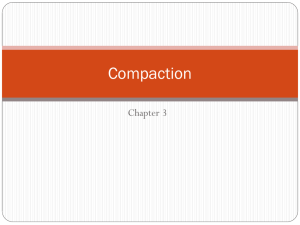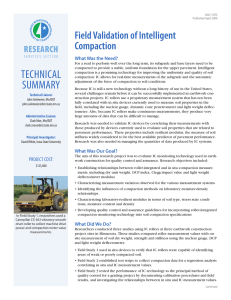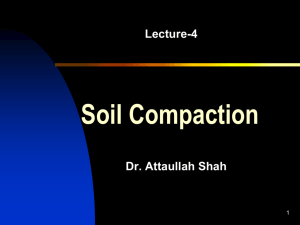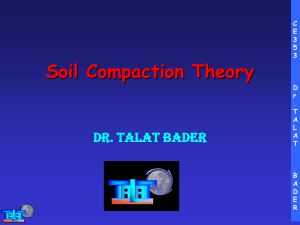chapter i
advertisement
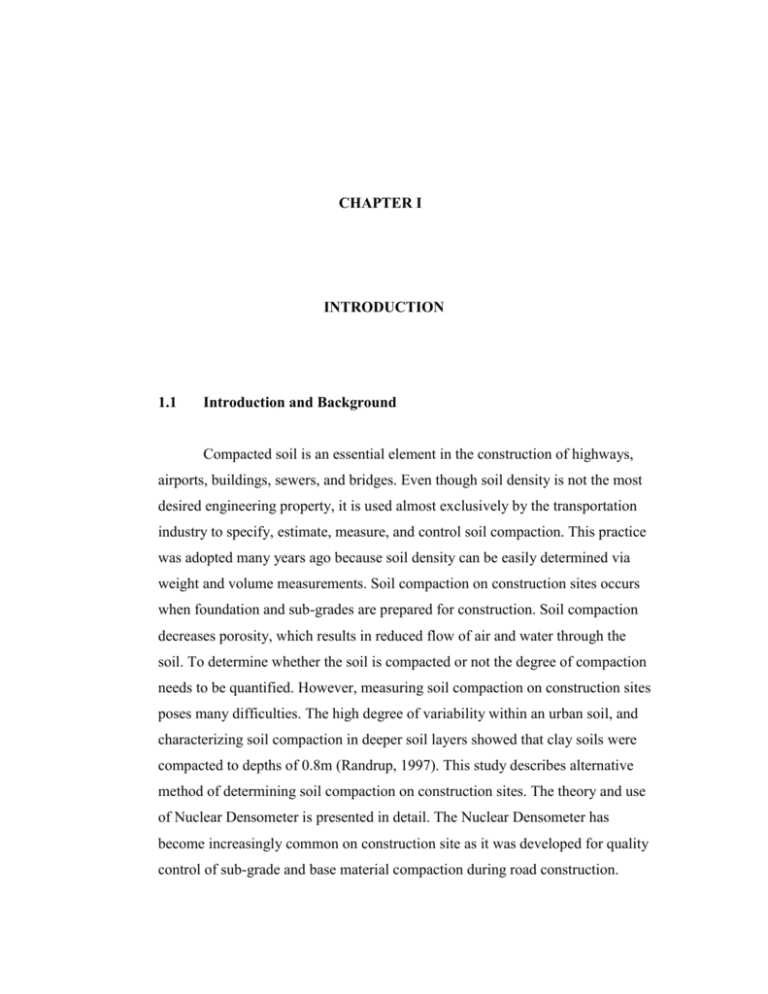
CHAPTER I INTRODUCTION 1.1 Introduction and Background Compacted soil is an essential element in the construction of highways, airports, buildings, sewers, and bridges. Even though soil density is not the most desired engineering property, it is used almost exclusively by the transportation industry to specify, estimate, measure, and control soil compaction. This practice was adopted many years ago because soil density can be easily determined via weight and volume measurements. Soil compaction on construction sites occurs when foundation and sub-grades are prepared for construction. Soil compaction decreases porosity, which results in reduced flow of air and water through the soil. To determine whether the soil is compacted or not the degree of compaction needs to be quantified. However, measuring soil compaction on construction sites poses many difficulties. The high degree of variability within an urban soil, and characterizing soil compaction in deeper soil layers showed that clay soils were compacted to depths of 0.8m (Randrup, 1997). This study describes alternative method of determining soil compaction on construction sites. The theory and use of Nuclear Densometer is presented in detail. The Nuclear Densometer has become increasingly common on construction site as it was developed for quality control of sub-grade and base material compaction during road construction. 1.2 Problem Statement The present methods for measuring density are slow, labor-intensive, dangerous, and/or of uncertain accuracy. Numerous accidents and fatality has been reported where technicians were preoccupied with performing Sand Replacement tests and did not see or hear heavy construction vehicle before it ran over them. Hence, construction sites are often under sampled, causing inadequate compaction to go undetected or feedback to be provided too late for the costeffective correction of problems. Sometimes, the opposite is true. Designers are encouraged to over specify to allow for the significant variability of the finished product, and contractors are encouraged to over compact to ensure acceptance and avoid rework. All of which means added cost to the owner. 1.3 Objective The objectives of this study are to:i) Determine the result of field density test using Sand Replacement Method. ii) Determine the result of field density test using Nuclear Densometer Method. iii) Correlate the results obtained from Sand Replacement Method with Nuclear Densometer in determining the soil field density. 1.4 Scope of Study The location of study selected is the “Electrified Double Track Railway Project” between Rawang and Ipoh. The project was selected for various reasons such as the availability of comprehensive and exclusive soil laboratory with the test equipment required for this study, the vicinity of the project and more importantly the embankment design and construction which requires a “zero” settlement rate. Compaction is of an important factor in this project to achieve the “zero” settlement rate. 1.5 Importance of Study The importance of this study is to establish the accuracy of the Nuclear Densometer against the conventional method of Sand Replacement checking the compacted density of various types of soil. Since this project involves a stretch of 180 km and approximately 20 million cubic meters of earth fill volume it is arguably the best choice to sample different type of soils. With this study it is aimed to considerably reduce the time to carry out field density test and results made available much faster so that time can be saved which means reducing idling time of earthworks equipment hence the cost of earthworks and overall project considerably cut. Even though the initial cost of the Nuclear Densometer equipment is much higher than conventional equipment, but with large number of test to be carried out (3 numbers of test for 2000m2 of fill) its cost is negligible compared to the quantity of earth fill.








